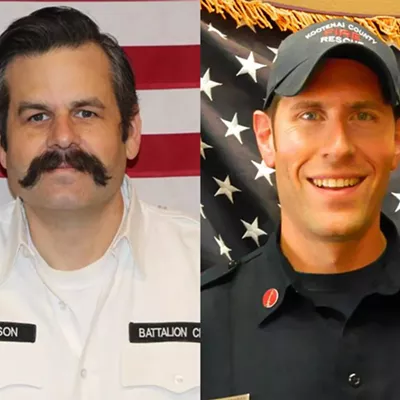Dealing with land use issues is often controversial and contentious, so why is such a diverse group of Spokanites hailing the process a success? This is largely due to the whole-hearted implementation of the city planning staff's public participation plan. They involved a wide range of citizens in the early development of the project and formed a policy committee that represented the varying concerns of the city. There is no accounting for how many otherwise unforeseen problems this inclusiveness has avoided.
Our shorelines are fragile areas of immense economic, aesthetic, ecological, cultural and historical significance. It was evident that people in Spokane recognized this from the start. The first public workshop held on the SMP last winter attracted a large, diverse and engaged group of Spokanites. Participants interacted with planning staff at several stations featuring elements of the plan, or maps, and wrote their comments on sheets of paper hung throughout the room or on the maps themselves. The staff then used this for guidance in first drafts. When we were recalling this workshop, my colleague and fellow committee member Brian Walker of the Lands Council said, "They really engaged people; you could see there was a lot of public support for the project. All interests in Spokane were at the table."
Since that time, the committee has been meeting frequently to update the Shoreline Master Program. While everyone had different priorities, we all had one common goal: protecting the shorelines of the Spokane River and ensuring that future shoreline development reflects the goals and vision of the City of Spokane. Having a diverse committee ensured that all angles of the issue could be seen. When differing priorities arose, both sides had to evaluate what was appropriate for the situation and find a mutually respectful solution. The group worked hard to ensure the downtown corridor remains vibrant and natural areas remain natural.
The result of this work is a document we can all be proud of. The SMP policy document provides vision and directives for the development regulations inside the 200-foot buffer along the Spokane River and Hangman Creek within the city limits, the revision of which will commence when the committee reconvenes this fall.
Surely if some of the city's other projects had included this kind of transparent, diverse and early public participation we could have avoided some big problems, like the River Park Square debacle and the late consideration of residents of the Otis Hotel which precipitated from the downtown revitalization plan. The City should commend the planning staff that carried out the SMP public participation plan and endeavor to use this kind of inclusiveness and transparency in its other projects.
Kitty Klitzke works for Futurewise, a non-profit organization that works to make cities great places to live while protecting open space, working farms and forests for this and future generations. Check out www.futurewise.org/spokane.















